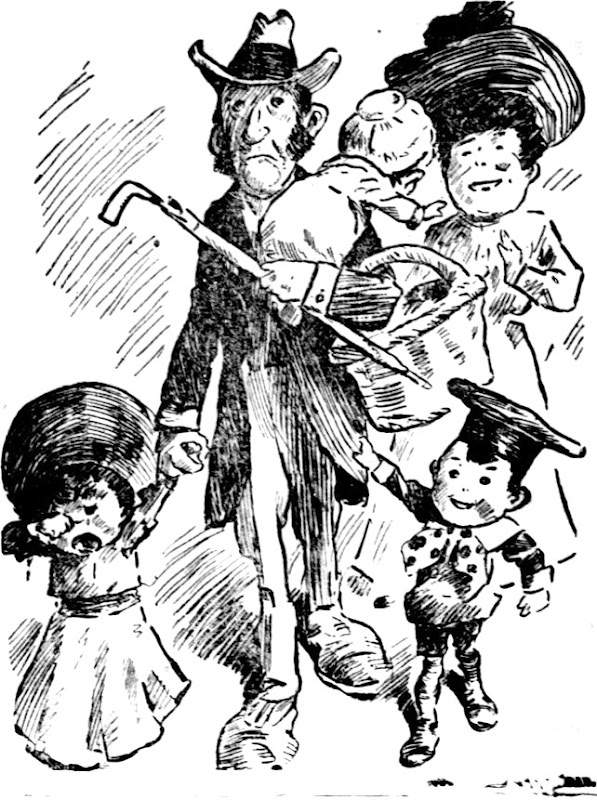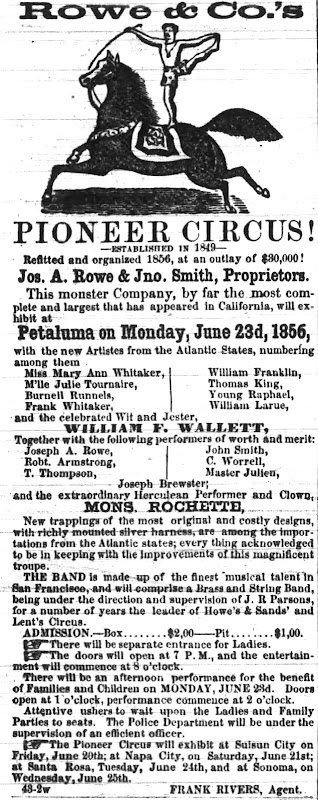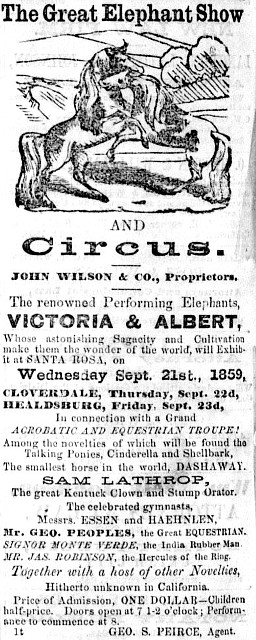Yeah, there’s a dead body on display at the fairgrounds. What’s the big deal?
Visitors to the 1985 Sonoma County Fair found a tent at the far end of the midway announcing a “World of Wonders” exhibit. Admission was a buck.
Inside were cages and stalls with deformed or otherwise unusual looking animals. According to the Press Democrat the menagerie included a hundred lb. water rat (which was probably a capybara), a “five-legged cow, a steer with two noses, a five-legged lamb, a ‘punk rock’ goat and a ‘headless’ chicken.”
In the center of that barnyard freak show was a coffin. Through the plexiglass top you could see the body of an adult man. His skin was leathery and the color of mahogany with sparse hair and beard. A loincloth covered his hips.
Propped against the side of the coffin was a sign: “He is real. Count Demonicus: preserved and petrified by arsenic solution.” The July 31 edition of the PD ran a photo of the coffin with the remains faintly visible.
But wouldn’t you know it, some killjoy didn’t think it was appropriate to have a dead guy laying on the straw covered dirt just a few steps away from the barn with the 4-H bunnies. The cops were called.
Coroner Investigator Tom Siebe thought it was probably fake and told the PD “Yeah, it looks pretty good. But under plastic, things can be deceptive.” To check on it, the county took possession of the body for an x-ray. It was real.
Yet Siebe planned to give it back to the exhibitor. “It’s nothing serious,” he said to the PD. “Our interest is not to go down and confiscate and arrest, but to make sure he complies with the laws as a legitimate businessman who more than likely is ignorant of minor infractions.” Apparently in California you can get permits from the state Department of Public Health to have human remains. Fun to know!
So did Mr. World of Wonders have said permits? Uhhh…no. Wasn’t aware he needed them. For nine years he and Count Demonicus had appeared at carnivals and fairs around the country without a complaint. The previous year they were even at the Sonoma County Fair followed by a Halloween show at Knotts Berry Farm. Never were they hassled by state inspectors when crossing state lines. When questioned about what was in the back of the truck they replied honestly, “oh, just a dead body.” While on the road, exhibitor John Strong used to sleep on top the coffin although he admits today it “kind of scared me.”
Without the paperwork the county wasn’t giving Strong his mummy back. Nobody knew what to do. It was unclear where it originally came from (more about that in a minute) but it certainly wasn’t anyone from Sonoma County and was thought to be about a century old, so no plans for an inquest were mentioned. Strong consulted his Southern California attorney to no avail and tried to negotiate with Siebe that it wasn’t an entire human body. “I told him the mummy was missing a toe. A rat bit off, but that didn’t matter.”
This happened during a sloooooow news cycle (top story: Bump removed from Reagan’s nose) and the UPI wire service caught wind of the doings in Santa Rosa. But instead of the Copy Desk doing its customary rewrite of the Press Democrat’s coverage, it appears they assigned the work to an intern with a yen for creative writing. What appeared in dozens of newspapers nationwide had numerous inventions to make the story more ghoulish.
The syndicate claimed the sheriff had the coffin and body padlocked in a holding cell (what, so the corpse can’t escape?) when it was actually laying in the hallway outside the coroner’s office. Instead of being an estimated 100 years old, UPI wrote that it was about 200 and from Central Europe “but not Transylvania.”
An extended version of that piece offered a paragraph of John Strong making glib quips about losing his star attraction: “He’s the best employee I’ve ever had…he never gave me any back talk and people liked him. You never had to pay him. He always showed up for work on time and never complained like some people do. You know, he’s not like somebody else you can just train.” (Contrary to that, the PD reported he was deeply saddened; “the loss of the mummy is as much sentimental as financial for him.”)
The mutant zoo remained at the fair until it closed. Strong was bitter the “Believe it or Not!” Museum in San Francisco could exhibit shrunken heads but he couldn’t get a permit to let the public gander at an entire corpse (well, at least a nine-toed one). Wasn’t World of Wonders like a museum? He worried his best option might be to donate the body to a university for a tax write-off. But nothing was resolved; the next venue on the carnival circuit beckoned so he left town Demonicusless.
Siebe told the PD he would give Strong a few weeks to see if he could work out the legal problems, but thought the county would probably end up giving the Count a “Christian burial.” In the meantime, Demonicus was moved from the office corridor to the sheriff’s evidence locker at Los Guilucos.
So where did John Strong get the body? Whose was it, and how and when did he die? Straightforward answers were not available; there was no paperwork and what appeared in the paper was mostly hearsay, two or three generations removed.
When he purchased the body and coffin Strong was told it was a man named Jim, an Illinois mortician’s assistant who died in the late 1800s. Since Jim had no family to pay for burial his boss embalmed the body, which then remained at the funeral home for most of a century because.
That doesn’t ring true. Every county in the nation has a Potter’s Field for burying the indigent at public expense; funeral parlors don’t normally keep bodies around like unclaimed luggage. This story also sounds suspiciously like a rehash of what famously happened earlier to outlaw Elmer McCurdy, whose arsenic-preserved remains were put on display by the undertaker who charged admission to see it.
The first post-mortuary sighting of Demonicus dates to April 1972. Texas-based Magus Films – brief history here – mainly produced and repackaged X rated movies such as “Sexual Fantasies U.S.A.” (IN COLOR!) for drive-in and grindhouse theaters, but they also booked horror triple features with the coffin on display near the popcorn popper. A pair of men dressed as monks attended on either side and handed out “anti hex” tokens to ward off evil. The show appeared for several months throughout the South and Midwest.

Following the horror movie tour Demonicus was in the hands of one of the original Magus partners who ditched showbiz to enter politics, winning election to the Nevada Assembly in 1974. Strong says the politician was using the coffin as a coffee table in a living room.
(Attempts to contact the man presumed to be the Assemblyman were unsuccessful.)
The next chapter in Jim Demonicus’ afterlife began in 1976, when a classified offering a “genuine mummy for sale” appeared in the trade mag “Amusement Business.” John Strong replied and bought the exhibit for $5,500. It was actually sold to his mother, as John was only 17 or 18 years old and had just graduated from high school. (Embalmed bodies are so much more practical than a Starbucks gift card.)
There needs to be a book or biopic about the remarkable Strong family. John is more properly John III as a third generation John Strong, all performers. His grandfather was a vaudeville juggler. John’s mother was a much-respected animal trainer and his dad founded “Big John Strong’s Circus,” which played Santa Rosa almost every year in the 1960s and early 1970s.
For their kids it was a storybook childhood, actively performing soon after they could walk. John’s sister was riding a baby elephant from age four while he was learning fire eating and sword swallowing. He could do a handstand on a single finger. When he was only eleven he began collecting oddities to create a sideshow for the family circus starting with a two-headed calf, which he bought with money from selling cotton candy.
 (RIGHT: John Strong’s first sideshow tent from 1977. Note the two posters and main entrance sign promoting Demonicus. Photo courtesy John Strong)
(RIGHT: John Strong’s first sideshow tent from 1977. Note the two posters and main entrance sign promoting Demonicus. Photo courtesy John Strong)
As the circus traveled around the West he would seek out animals with extra legs, heads, or other body parts to add to his collection – which, of course, would include Demonicus. John continued to add animal novelties (including Quacky, the four-legged duck and “Jimmy the Midget Pickpocketing Horse”), ending up with over 600 exhibits. The show later morphed into an old-timey circus sideshow featuring live performers.
But what became of the Count? Enforcing state laws regarding mummified bodies is pretty unprecedented and the coffin was left to gather dust at the sheriff’s warehouse. Failed efforts were made to treat the odd situation somewhat like a regular coroner’s inquiry, with a forensic anthropologist called in to find out when and why he died.
More than three years after the body was seized, Sonoma County finally made the decision to bury it. On October 7, 1988 it was quietly interred in an unmarked grave at the County Cemetery, which is that flat patch of ground east of the Rural Cemetery and next to Poppy Creek. The name on the death certificate is, “Demonicus AKA Jim AKA John Doe.”
And with that, the tale of Count Jim Demonicus ends…probably. Like any good horror movie, there’s always a chance for a sequel, and here it’s actually found on the death certificate. Under cause of the death it reads: “Investigation pending.”





















